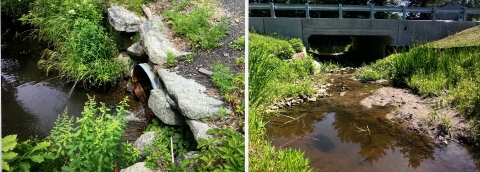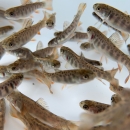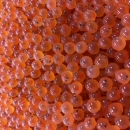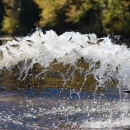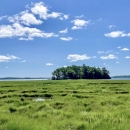About Us
The Central New England Fish and Wildlife Conservation Office (FWCO) is part of a network of field stations located throughout the nation that works to conserve fish and aquatic resources. Over 300 biologists from the Arctic Circle to the Florida Keys monitor and control invasive species invasive species
An invasive species is any plant or animal that has spread or been introduced into a new area where they are, or could, cause harm to the environment, economy, or human, animal, or plant health. Their unwelcome presence can destroy ecosystems and cost millions of dollars.
Learn more about invasive species ; protect imperiled species; evaluate native fish stocks and their habitats; and work with our partners to solve problems.
Our field stations provide technical assistance to tribes; conduct scientific studies into fishery problems; restore habitat through the National Fish Passage Program and the National Fish Habitat Action Plan; and collaborate with partners to conserve migratory fishes that cross multiple jurisdictions.
The Central New England FWCO was established to plan, conduct and evaluate fish and wildlife management activities and aquatic resource restoration initiatives in cooperation with state, federal and non-government organizations.
.
Our Mission
Since 1871, the U.S. Fish and Wildlife Service has been applying science-based approaches to conservation challenges. We work with our partners and engage the public to conserve, restore, and enhance fish and other aquatic resources for the continuing benefit of the American people. Conservation is at the heart of what we do, and we recognize that we do this work for the American people–both the present generation who benefit today and future generations who will inherit our legacy of conserving America’s aquatic resources.
The goal of the Central New England FWCO is to protect and restore migratory and resident fish species and their habitats in the rivers of Southern Maine, New Hampshire, Massachusetts, Rhode Island, Connecticut and Southeastern New York. Our priority fish species include river herring (blueback herring and alewife), American shad, American eel, sea lamprey and brook trout, however, all migratory and resident aquatic species benefit from the work conducted by the Central New England FWCO.
Other Facilities in this Complex
The Central New England FWCO is co-located at the Nashua National Fish Hatchery in Nashua, New Hampshire.
We also belong to a broader complex of FWS facilities known as the Maine-New Hampshire Fish and Wildlife Complex. The complex is comprised of 7 offices, including three national fish hatcheries. Collectively, we conserve the unique fish and wildlife of Maine and New Hampshire such as wood ducks, eagles, plovers, songbirds, cougar, lynx, brook trout, salmon and alewife.



